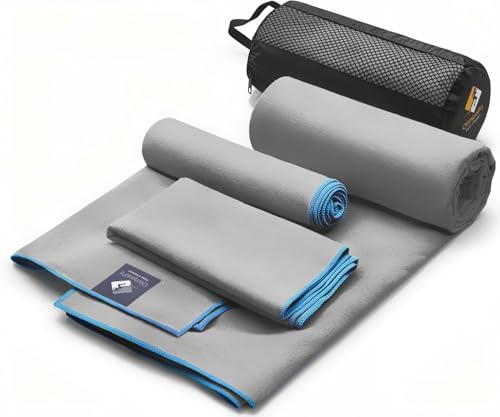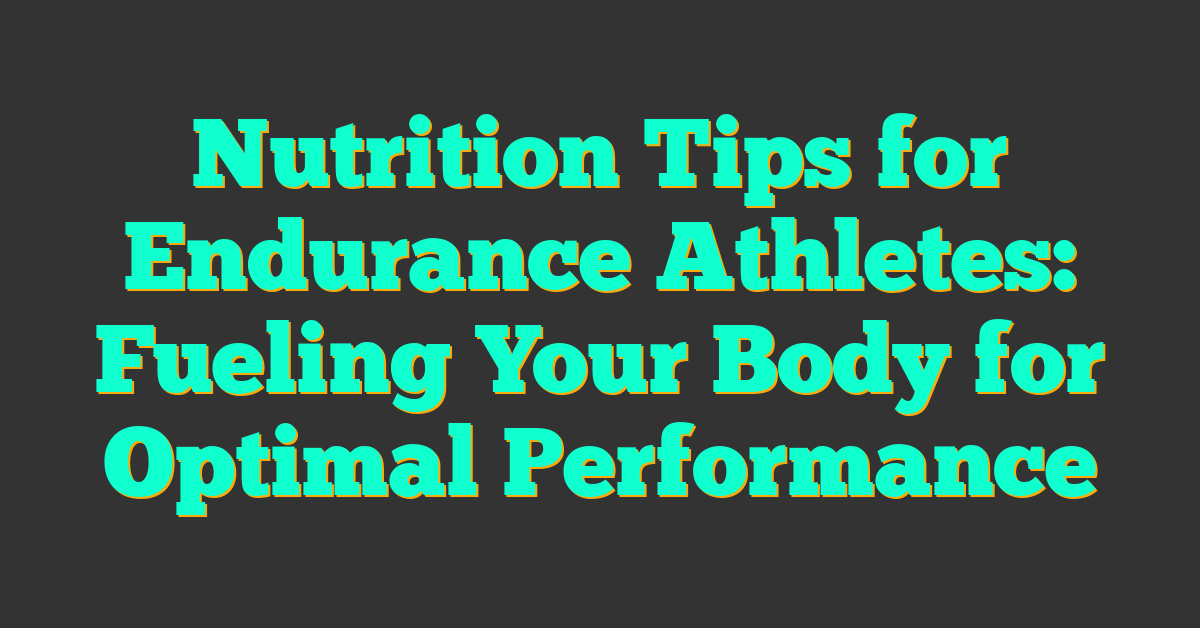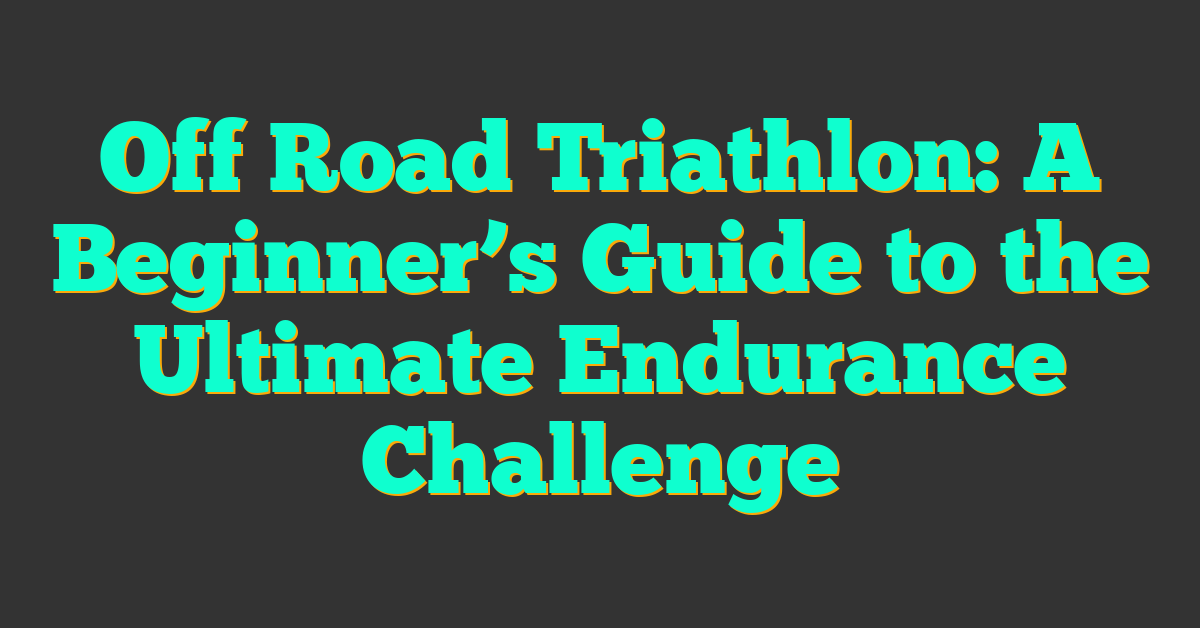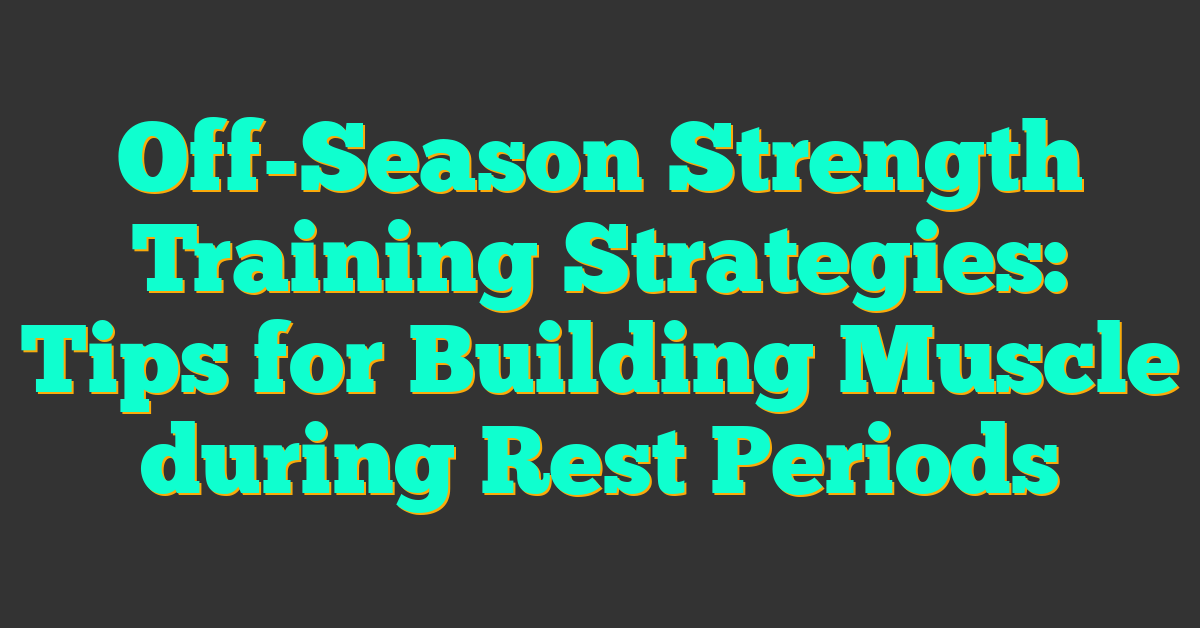I love how triathlon spirit meets purpose. When I toe the start line I’m not just racing. I’m raising awareness and funds for causes I care about. Charity partnerships turn every mile into impact. They unite athletes volunteers sponsors and local communities. The finish line feels bigger than a medal.

In this guide I’ll share what makes these events special. How to choose a race that aligns with my values. Simple ways to fundraise without stress. And tips to stay motivated when training gets tough. Whether I’m a first timer or chasing a PR I can help a cause while I swim bike and run. Let’s dive in and make every effort matter.
What Makes Triathlon Events With Charity Partnerships Stand Out
Triathlon-charity partnerships stand out because they merge performance goals with measurable social impact. I coach athletes into these events when the mission amplifies motivation.
- Integrated fundraising platforms simplify giving and tracking, examples include JustGiving, GivenGain, and DonorDrive.
- Structured entry options offer guaranteed bibs for fundraisers, examples include London Triathlon charity entries and IRONMAN Foundation Team IMF.
- Visible impact metrics quantify outcomes, examples include dollars granted, grants issued, and communities served.
- Athlete services add value beyond a bib, examples include coaching plans, race-week hospitality, and branded kits.
- Corporate matching doubles donations fast, examples include Benevity, YourCause, and employer match portals.
- Inclusivity programs expand access, examples include para-tri grants, youth entries, and fee scholarships.
- Community engagement strengthens race-day energy, examples include charity cheer zones, volunteer brigades, and post-race meetups.
- Story-driven media elevates cause awareness, examples include athlete spotlights, course signage, and broadcast mentions.
- Transparent reporting builds trust, examples include audited financials, impact reports, and real-time leaderboards.
- Training alignment sustains consistency, examples include milestone incentives, team long runs, and coached open-water sessions.
Notable triathlon-charity figures
| Organization or Event | Scope | Quantified Impact | Source |
|---|---|---|---|
| IRONMAN Foundation | Global IRONMAN events | $55,000,000+ in charitable giveback since 2003 | IRONMAN Foundation, About, ironmanfoundation.org |
| Team In Training, Leukemia & Lymphoma Society | Multisport endurance, including triathlon | $1,500,000,000+ raised since 1988 | LLS, Team In Training History, lls.org |
| Challenged Athletes Foundation | Para-sport support, including para-triathlon | 44,000+ grants awarded since 1994 | CAF, Impact, challengedathletes.org |
I prioritize events that publish impact data, integrate fundraising tech, and support athletes with coaching touchpoints. I see higher training adherence and finish rates when athletes connect daily sessions to a mission.
Criteria For Reviewing Charity-Linked Triathlons
I assess charity-linked triathlons with the same precision I use for elite race prep. I look for verified impact, athlete-centered support, and pro-grade operations.
Charity Credibility And Transparency
I confirm nonprofit status and independent oversight. I verify 501(c)(3) status through IRS Tax Exempt Organization Search, if the partner operates in the US. I check ratings from Charity Navigator and BBB Wise Giving Alliance for governance and program spend, if the group has a public profile. I look for annual audits, Form 990 access, and conflict of interest policies, if I commit my platform and time.
I expect clear impact metrics. I want program expense ratios at or above 75 percent and impact reports that tie dollars to outcomes, if I endorse fundraising asks. I value sector standards like GRI reporting, if the organization works across multiple countries.
I review exemplars for benchmarks. I study the IRONMAN Foundation disclosures for project grants and volunteer programs. I track Team In Training reports from the Leukemia and Lymphoma Society for research and patient services. I validate third party verification through CharityWatch, if available.
Athlete Support And Fundraising Tools
I rate athlete support as a driver of finish line success. I favor integrated platforms like DonorDrive, Classy, and JustGiving with automated tax receipts, if the event uses peer to peer campaigns. I want minimum targets posted up front and fee details listed in plain language, if the charity offers guaranteed entries.
I look for training aligned services. I expect coaching access, plan libraries, and race week logistics help like bib pickup windows and gear transport. I count matching gift guidance, corporate team options, and email templates as multipliers for fundraising pace.
I test communication speed and clarity. I expect response times under 48 hours across email and chat. I check refund and deferral policies for force majeure coverage. I confirm privacy safeguards for donor data through SOC 2 or ISO 27001 notes, if the platform handles payments.
Event Operations And Sustainability
I require sanctioned races with robust safety. I verify USA Triathlon or World Triathlon sanctioning, if the course uses open water. I confirm certified medical coverage, risk assessments, and water quality testing with local approvals. I review athlete to volunteer ratios and course density plans for bikes and runs.
I prioritize credible sustainability frameworks. I look for Council for Responsible Sport certification and reuse and recycle streams with clear signage. I want low waste aid stations, heat plan triggers, and equitable community engagement tied to charity goals.
I align logistics with athlete outcomes. I check wave starts and swim exits for congestion control. I verify bike course marshaling and penalty protocols. I expect transparent timing splits with live tracking and inclusive accessibility notes.
| Metric | Target | Source |
|---|---|---|
| Program expense ratio | ≥ 75% | Charity Navigator Methodology |
| Fundraising cost per $1 raised | ≤ $0.25 | CharityWatch Rating Guide |
| Impact reporting cadence | Annual or quarterly | GRI Standards |
| Financial transparency | Audited financials and Form 990 public | BBB Wise Giving Alliance |
| Race sanctioning | USA Triathlon or World Triathlon | USA Triathlon, World Triathlon |
| Sustainability credential | Council for Responsible Sport Silver or higher | Council for Responsible Sport |
Top Triathlon Events With Charity Partnerships To Know
I track charity-linked triathlon events that deliver clear impact and strong athlete support. I use these races to align performance with measurable giving.
Major Series And Foundation-Backed Races
- IRONMAN Foundation: I target IRONMAN races that offer Team IMF slots, community grants, and Race For Change initiatives, with integrated fundraising and athlete services (IRONMAN Foundation).
- Team In Training: I guide athletes into TNT entries across select triathlons, with coaching, travel logistics, and mission integration for blood cancer research (The Leukemia & Lymphoma Society).
- USA Triathlon Foundation: I leverage USAT Foundation charity entries at sanctioned races, with grants that support youth, para, and elite pipelines (USA Triathlon Foundation).
- Challenge Family: I use Challenge Cares style activations at European and Asia-Pacific races, with partner nonprofits that link local impact to race host cities (Challenge Family).
- Challenged Athletes Foundation: I recruit athletes into CAF entries at marquee events, with adaptive sport grants and inclusive start lines that expand access (Challenged Athletes Foundation).
Regional And Community-Driven Charity Triathlons
- Malibu Triathlon x Children’s Hospital Los Angeles: I target this fast course for high-visibility fundraising, with corporate teams and age-group waves that fuel CHLA research and care (CHLA).
- London Triathlon x Charity Partners: I align UK athletes with Macmillan and GOSH Charity entries, with fundraising pages and expo presence that boost reach (London Triathlon).
- Chicago Triathlon x Life Time Foundation: I connect Midwest racers to school nutrition programs, with charity bibs and volunteer stations that amplify impact (Life Time Foundation).
- Escape From Alcatraz x Nonprofit Partners: I match athletes with partner causes and lottery bypass entries, with media attention that elevates donation traction (Escape From Alcatraz Triathlon).
- Noosa Triathlon x Local Causes: I route Oceania athletes to Sunshine Coast charities, with community grants and festival-week activities that engage families (Noosa Triathlon).
Virtual And Hybrid Fundraising Options
- IRONMAN Foundation Your Journey Your Cause: I run hybrid campaigns that pair local training with peer-to-peer pages, with funds directed to verified nonprofits of choice (IRONMAN Foundation).
- GivenGain Event Hubs: I set up team pages for global participation, with secure processing and tax receipts that support cross-border donors (GivenGain).
- JustGiving Sports Pages: I link training logs and social updates to donor milestones, with simple integrations that keep momentum high (JustGiving).
- Strava Challenge Tie-ins: I design per-mile pledges across swim bike run, with segment goals that sync training blocks to fundraising spikes (Strava).
- Club-hosted Virtual Tri Series: I deploy USAT-sanctioned formats with verified times and livestream briefings, with flexible windows that fit periodized plans (USA Triathlon).
| Event or Program | Charity Partnership Focus | Notable Impact | Source |
|---|---|---|---|
| IRONMAN Foundation | Community grants, Team IMF entries | $55M+ in grants since 2003 | https://ironmanfoundation.org/about |
| Team In Training | Blood cancer research and support | $1.5B+ raised since 1988 | https://www.teamintraining.org/about |
| Malibu Triathlon | Children’s Hospital Los Angeles | $1.4M+ raised in 2023 | https://www.chla.org/blog/2023-malibu-triathlon |
| USA Triathlon Foundation | Youth, para, elite grants | Annual grants across 3 pillars | https://usatriathlonfoundation.org |
| GivenGain | Global event fundraising | Official partner to major races | https://www.givengain.com/e/for-event-organisers/ |
Athlete Experience And Value
I focus on what you get on course and off course when a triathlon partners with a charity. I match performance goals with concrete benefits that add value across training, racing, and impact.
Registration, Perks, And Fundraising Minimums
I map costs and perks first, then I weigh them against fundraising commitments. I use published program pages and current season guides.
Table: Typical ranges across triathlon charity partnerships
| Item | Sprint or Local Charity Events | Olympic or Regional Charity Events | 70.3 Series Charity Programs | 140.6 Series Charity Programs |
|---|---|---|---|---|
| Registration fee | $75–$150 | $125–$250 | $300–$475 | $600–$900 |
| Fundraising minimum | $250–$750 | $500–$1,500 | $1,500–$4,000 | $3,000–$7,500 |
| Perks value estimate | $150–$350 | $200–$500 | $400–$900 | $750–$1,500 |
| Common perks examples | Branded kit, charity tent access | Coaching plans, gear bundle, expo invites | Priority entry, team coach access, race-day hospitality | Premium entry, concierge support, impact dinner, VIP recovery |
« How to Find Last-Minute Triathlon Races Near You: Fast Strategies, Apps, Pro Tips
Triathlon Events with Virtual Options: Top Picks, Training Tips, and How to Race Smart »
I compare perks to out-of-pocket costs for net value. I treat coaching access, hospitality, and priority entry as high-value if training time is tight. I assess matching gift eligibility and corporate team options because these tools reduce personal fundraising lift. I confirm refund and defer policies before committing to a fundraising tier.
- Registration: Priority entries, bib transfers, and defers vary by charity tier and race sanctioning.
- Perks: Coaching plans, training peaks trials, and group sessions boost completion odds for first-time triathletes.
- Fundraising: Integrated platforms, auto tax receipts, and employer matching increase donor conversion rates.
- Coaching: Team captains, office hours, and race-week recon cut decision fatigue.
- Logistics: Charity tents, bag drops, and crew wristbands streamline race-day flow.
Sources
- IRONMAN Foundation program overview, ironmanfoundation.org
- Leukemia & Lymphoma Society Team In Training, teamintraining.org
- USA Triathlon Foundation programs, usatriathlonfoundation.org
- Malibu Triathlon beneficiary pages, malibutri.com
- GivenGain charity integration, givengain.com
- JustGiving sports fundraising, justgiving.com
On-Course Atmosphere And Post-Race Impact
I plan for a distinct race-day feel with charity partnerships. I anchor that with visible support zones and measurable outcomes.
- Atmosphere: Cheer squads, branded kits, and team racks create high-energy moments on bike mounts and run turns.
- Support: On-course spotters, medical overlays, and team aid volunteers increase perceived safety in congested sections.
- Execution: Dedicated corrals, transition captains, and penalty education speed up athlete flow.
- Community: Family zones, finish-line reunions, and post-race tents strengthen donor engagement.
- Reporting: Impact dashboards, grant announcements, and beneficiary spotlights connect effort to outcomes.
Table: Documented impact signals from major triathlon charity programs
| Program | Cumulative Funds Raised | Notable Athlete Support Examples | Reference |
|---|---|---|---|
| IRONMAN Foundation | $55M+ since 2003 | Community grant awards, race-week service projects | ironmanfoundation.org |
| Team In Training (LLS) | $1.5B+ since 1988 across all sports | Certified coaches, team travel coordination, fundraising coaching | teamintraining.org |
| USA Triathlon Foundation | $3M+ in grants across youth, para, and grassroots | Athlete scholarships, para equipment grants | usatriathlonfoundation.org |
I look for post-race emails that include grants funded, beneficiaries reached, and location-specific outcomes. I value programs that tag donations to city grants and publish project summaries within 30–90 days. I encourage athletes to request employer match confirmations within 7 days while donor attention remains high.
- IRONMAN Foundation impact, ironmanfoundation.org/our-impact
- LLS Team In Training impact, lls.org/team-in-training
- USA Triathlon Foundation grants, usatriathlonfoundation.org/grants
Measuring Impact And Accountability
I anchor every triathlon-charity partnership in clear data and open reporting. I coach athletes to track results like splits, I track impact the same way.
Reporting, Audits, And Storytelling
Reporting, audits, and storytelling drive accountability for charity triathlon events. I look for timely disclosures and independent verification.
- Verify audited financial statements, IRS Form 990, and notes
- Verify audit type, independent audits or reviews by licensed CPAs
- Verify governance, board independence and conflict policies
- Compare impact reports, outputs and outcomes per program
- Compare third-party ratings, Charity Navigator and BBB Wise Giving Alliance
- Compare data standards, GRI or SASB where declared
- Collect race-linked grant lists, recipients and award dates
- Collect beneficiary quotes, athlete stories, and community photos
- Collect variance explanations, fundraising targets vs actuals
- Capture digital traceability, donation IDs and platform receipts
Sources: IRS Form 990 instructions, AICPA audit standards, Charity Navigator methodology, BBB Wise Giving Alliance Standards for Charity Accountability, Global Reporting Initiative.
| Accountability item | Benchmark or example | Source |
|---|---|---|
| Program expense ratio | ≥ 65% of total expenses | BBB Wise Giving Alliance |
| Program expense ratio, high performer | ≥ 75% | Charity Navigator |
| Fundraising efficiency | ≤ $0.25 per $1 raised | Charity Navigator |
| Reporting cadence | Annual financials, annual impact report | GRI, sector norms |
| Independent audit | Annual audit for orgs with multi‑million revenue | AICPA, BBB WGA |
| Board independence | Majority independent directors | BBB WGA |
Where The Money Goes And Measurable Outcomes
Where the money goes and measurable outcomes define the real impact of race partnerships. I map each dollar from athlete fundraising to specific outputs.
- Track program buckets, grants, research, patient services, youth sport
- Track event-tied grants, local nonprofits in host communities
- Track capital items, adaptive equipment and safety gear
- Track training access, scholarships and coach education
- Track awareness reach, impressions and education sessions
- Track beneficiary results, return-to-sport rates and health navigation
Examples from common triathlon-charity models, based on public reports by the IRONMAN Foundation, the Leukemia & Lymphoma Society Team In Training, and the USA Triathlon Foundation.
| Use of funds | Unit outcome | Sample cost | Source example |
|---|---|---|---|
| Community grant, host city | 1 local nonprofit grant | $2,500–$10,000 | IRONMAN Foundation grant lists |
| Research funding, blood cancers | 1 lab project tranche | $25,000–$100,000 | LLS annual report |
| Patient travel assistance | 1 family travel stipend | $500–$1,000 | LLS support programs |
| Youth triathlon scholarship | 1 season registration and gear | $350–$750 | USAT Foundation grants |
| Para-tri adaptive equipment | 1 racing chair or handcycle share | $1,500–$5,000 | USAT Foundation adaptive grants |
| Water safety gear, community | 10 lifeguard kits | $800–$1,200 | IRONMAN Foundation equipment grants |
Metrics I log against each event, if the charity publishes them.
- Confirm allocation ratio, program vs admin vs fundraising
- Confirm cost per outcome, dollars per beneficiary served
- Confirm geographic distribution, host city vs national projects
- Measure donor retention, multi‑year athlete return rate
- Measure time to deploy, days from race to grant disbursement
- Measure verification, beneficiary acknowledgment and receipt
I align my race calendar with partners that post audited financials, publish grant rosters with amounts, and link athlete pages to receipt IDs. I share those links with my athletes so training goals and impact goals move in step.
Accessibility, Inclusivity, And Community Engagement
I program triathlon charity partnerships to expand access, deepen inclusion, and activate community engagement. I align race design with clear standards from USA Triathlon and World Triathlon to keep it consistent, safe, and fair.
Para-Tri, Relays, And First-Timer Programs
I structure para-tri pathways, relay formats, and novice support so athletes enter with confidence if barriers exist.
- Enable para-tri categories, equipment accommodations, and guide support based on World Triathlon rules and USAT adaptive policies (World Triathlon Para Rulebook 2024, USA Triathlon Competition Rules 2024).
- Offer relay entries, mixed-skill pairings, and short-course options that keep effort scaled for beginners and families.
- Run first-timer clinics, skills briefings, and orientation swims that remove unknowns before race week.
- Assign accessible transition layouts, tactile markings, and quiet zones that improve flow for athletes with sensory or mobility needs.
- Provide guide matching, tandem protocols, and tether standards that support PTVI athletes with precision.
- Publish cutoff guidance, alternative starts, and on-course assistance points that respect pace variability.
Table 1. Para-tri categories and common accommodations
| Framework | Division | Typical accommodation | Source |
|---|---|---|---|
| World Triathlon | PTWC H1–H2 | Handcycle, racing chair, flat rack space | World Triathlon Para Rulebook 2024 https://www.triathlon.org/uploads/docs/World_Triathlon_Para_Triathlon_Rulebook_2024.pdf |
| World Triathlon | PTS2–PTS5 | Prosthetics, limb support, transition aides | World Triathlon 2024 |
| World Triathlon | PTVI B1–B3 | Guide, tether, tandem bike for B1–B2 | World Triathlon 2024 |
| USA Triathlon | Adaptive athletes | Equipment checks, guide registration, course notes | USA Triathlon Rules 2024 https://www.teamusa.org/usa-triathlon/about/governance/rulebook |
I integrate charity alignment for access expansion if a partner mission fits. Examples include grants from Challenged Athletes Foundation for equipment and travel which exceeded 44,000 grants since 1994 with more than $159M in support as of 2024 (CAF Impact Report 2024 https://www.challengedathletes.org/impact).
Local Partnerships And Volunteer Involvement
I anchor triathlon events to local charity partnerships and structured volunteer programs that lift impact and experience.
- Connect race routes, beneficiary nonprofits, and municipal services so course plans add community value.
- Recruit volunteer teams, train role leads, and certify medical coordinators in collaboration with local EMS.
- Staff aid stations, marshal intersections, and manage gear checks through neighborhood groups and schools.
- Recognize fundraisers, celebrate volunteers, and report grants back to host communities with post-race briefs.
- Track service hours, convert hours into in-kind grants, and publish outcomes with partner signoff.
Table 2. Volunteer scale by triathlon event size
| Event type | Typical volunteers | Example source |
|---|---|---|
| Sprint, Olympic | 300–800 | USA Triathlon event operations guidance 2023 https://www.teamusa.org/usa-triathlon |
| IRONMAN 140.6 | 3,000–5,000 | IRONMAN Volunteer Program https://www.ironman.com/volunteer |
I set transparent flows for donations, microgrants, and program delivery so athletes see outcomes fast if funds pass through race-day campaigns. Examples include IRONMAN Foundation community grants announced on race week that document recipients and amounts with location level detail (IRONMAN Foundation Grants https://ironmanfoundation.org).
How To Choose The Right Charity Triathlon For You
I match my race calendar to causes that prove impact and support athletes. I keep selections simple, transparent, and mission fit.
Aligning Causes With Personal Values
I lock my cause first, race second.
- Define, then shortlist causes that connect to your story, for example cancer research, clean water, youth sports.
- Map, then match charity missions to event locations and distances, for example sprint relays for first-timers, 70.3 builds for experienced athletes.
- Verify, then confirm 501(c)(3) status through the IRS Tax Exempt Organization Search, if you race in the US.
- Check, then review impact and accountability ratings on Charity Navigator and BBB Wise Giving Alliance, if the nonprofit appears on those platforms.
- Pull, then scan Form 990 program expense ratios via Candid GuideStar, if you want objective spend data.
- Read, then assess recent impact reports with dated outcomes, for example grants awarded, patients served, miles of shoreline restored.
- Compare, then select races with athlete-centered benefits that match your training, for example coached plans, para-tri guides, fundraising toolkits.
- Ask, then confirm restricted giving options or fund designation, if you want donations tied to a specific program.
- Prioritize, then pick events that publish post-race grant lists and timelines, if transparent impact matters to you.
Key vetting targets
| Metric | Target range | Source |
|---|---|---|
| Program expense ratio | 75% or higher | Charity Navigator Methodology |
| Documented annual report | Published within 12 months | BBB Wise Giving Alliance Standards |
| Fundraising platform uptime | 99.9% SLA, reported monthly | Vendor status pages |
| US nonprofit status | IRS 501(c)(3) current | IRS TEOS |
Maximizing Donations And Employer Matching
I treat fundraising like structured training.
- Centralize, then use one donation page per race with QR code, if you post across social channels.
- Enable, then activate recurring gifts and peer-to-peer pages, if your charity supports pledge tracking.
- Integrate, then connect Stripe or PayPal for lower processing costs, if the charity’s platform allows it.
- Add, then embed employer matching lookup tools like Double the Donation, if your donors work at large firms.
- Submit, then file matches through Benevity, YourCause, or CyberGrants portals, if donor employers use those systems.
- Promote, then schedule two clear calls to action per week with progress bars, if you want steady conversion.
- Segment, then send short updates to teammates and local clubs, if you want higher open rates.
- Time, then launch pushes on paydays and company giving weeks, if your audience follows payroll cycles.
- Track, then export donor reports and reconcile totals after race day, if you plan to report outcomes back.
Common matching parameters
| Parameter | Typical value | Source |
|---|---|---|
| Match ratio | 1:1 to 2:1 | Double the Donation Corporate Matching Guide |
| Annual cap per employee | 1,000 to 10,000 USD | Double the Donation Data Hub |
| Volunteer grant rate | 10 to 25 USD per hour | Double the Donation Volunteer Grants |
| Submission window | 30 to 180 days post-donation | Employer program guidelines |
Cost planning checkpoints
- Confirm, then capture processing fees in your goal math, if the platform uses Stripe or PayPal at 2.2% to 2.9% plus 0.30 USD per transaction, per Stripe and PayPal pricing.
- Ask, then request fee coverage toggles on the donate form, if donors want to offset costs.
- Review, then compare platform contracts for 0% to 5% add-on costs, if the charity considers a new provider.
- IRS Tax Exempt Organization Search
- Charity Navigator Methodology
- BBB Wise Giving Alliance Standards for Charity Accountability
- Candid GuideStar Nonprofit Profiles
- Double the Donation Matching Gift Statistics
- Stripe Pricing, PayPal Pricing
Conclusion
What matters most is why I toe the line. When I race with heart it changes how the training feels and how the finish line hits. Purpose turns fatigue into fuel and makes every mile count for more.
If this speaks to you pick one cause that lights you up. Set a date. Tell your circle. Keep the mission close on hard days. I’ll be cheering for you as you turn sweat into impact and make your next tri a story worth telling.










